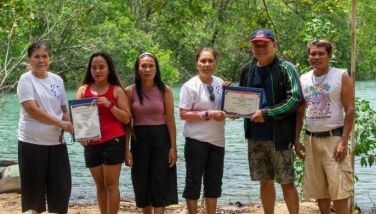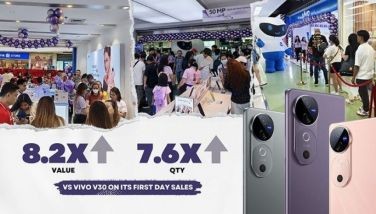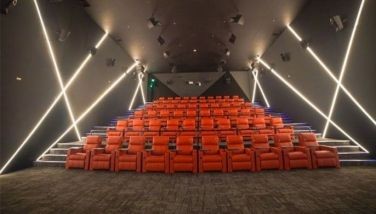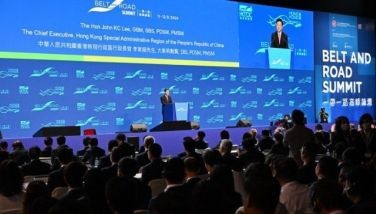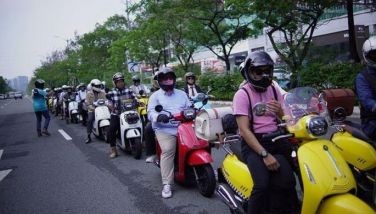Kia Vision 21
October 22, 2003 | 12:00am
Jeju Island, South Korea — If somebody tells you that the target of Kia Motors Corporation of Korea is to become one of the world’s top five automobile manufacturers by 2010, you might think that a) that somebody is pulling your leg or that b) Kia Motors may be setting their goals a bit too far.
You see, to be in the Top Five you have to compete against seasoned and mighty adversaries like General Motors (GM), the Ford Group, Toyota, Volkswagen, Renault/Nissan, Honda, Mitsubishi, Daimler-Chrysler and other carmakers. On top of that, the current glut in the world’s automobile supply threatens to slow down worldwide automotive production. With these factors, Kia Motors has a lot going against the achievement of its goals.
But before you dismiss Kia Motors’ goal as an impossible dream, you have to look at the history of Kia and the history of Korea, and the similarities between them.
Korea was an agricultural country under the Japanese rule before and during the Second World War. Upon Japan’s defeat, the country was placed under American and Russian supervision, with the southern part of the Korean peninsula embracing democracy and the northern part communism. In 1952, war broke out again between the north and the south, further placing the country in chaos. But after an uneasy peace was brokered between the warring parties, a demilitarized zone (DMZ) divided Korea into two independent countries. The North became a hermit state, isolating itself from the world while South Korea began its own reconstruction. It re-invented itself from being an agriculture-based economy to an industrial giant and the fruits of that growth can be felt when one visits South Korea today.
Kia started operations in 1944 as Kyungsung Precision Industry and began producing the first Korean-made bicycle in 1952. It came out with its first motorcycle in 1961 and its first three-wheeled truck in 1962. In 1973, it produced its first made-in-Korea gasoline engine and began production of its first Korean-made passenger car, the Brisa, a year later. In 1975, it started exporting the Brisa pickup and in 1976, took over Asia Motors Company and produced diesel engines two years after. The 80s were the boom years for Kia, with the sales of the Bongo truck and minibus, Ceres multipurpose truck, Besta minibus and the Pride passenger car, as well as their export, acting as the company’s buffer against the second world oil shock and Korea’s internal crisis. It was also during the eighties that Kia realized a total vehicle production of 1 million vehicles.
The 90s saw the construction of the Asan Bay Plant and change of the company’s name to Kia Motors Corporation. The production system was expanded to an international scale and Kia gained technological competitiveness in the global market by developing its own first new model. The company celebrated its 50th anniversary in 1994 with the expansion of its overseas markets, a total vehicle production of three million units and more new models, including the Sephia and the Sportage.
By 1996, total production was up to five million units and exports reached two million units in 1998, in spite of the foreign currency crisis in 1997 and the IMF bailout of the Korean economy. A company-wide overhaul after the crisis achieved a complete normalization of management operations and the carmaker introduced ten new models from 1999 to 2002. It also competed and won in international rallies and races, such as the Paris-Dakar Rally and the Baja Rally as it received awards from Korean HR and Quality management bodies. Kia entered the Chinese automotive market in 2001 while its cumulative production reached 10 million units last year. Thus, Kia Motors has demonstrated its ability to re-invent and re-engineer itself to manage the various crises it faced during its entire history.
This time around, Kia wants to re-invent itself as "the customer’s brand of choice, not just by default". During the Kia Vision 21 conference at the Kia Head office in Seoul, Steve Bowen, the deputy GM of the Export Support Team and the head of Kia’s international public relations, presented Kia’s plans for achieving its targets and its thrust for improved brand image. Celebrity endorsements, such as Andre Agassi’s on the Kia Sorento SUV, has helped increase the popularity of the brand, especially in Europe where the production of the Sorento can barely meet the demand. Kia also plans to introduce 17 new models from 2003 to 2007, kicking off with the new Opirus/Amanti model.
Deok-Soo Kim, the manager of the Kia’s Asia & Pacific Team, believes that the ASEAN region can contribute tremendously to the company’s 2010 target. With the improved product quality, brand image and expanding dealer network, he is confident that Kia dealers, especially in the Philippines, can achieve their individual goals and satisfy their customer’s demands at the same time. He added that dealers and customers can anticipate new and exciting models from Kia.
When our group was given the grand tour of the Hwasung Plant, (formerly the Asan Bay Plant), we were impressed with the sheer size of the facility (11 million square meters) and the modern manufacturing equipment and capability (900 robots, about 2400 units/day). We were also taken around the 4.5-kilometer proving grounds that include 45-degree banked curves where test cars can safely corner at 250kph. Even Minoru Tanaka, the Japanese COO of Columbian Autocar Corporation (the Philippine distributor of Kia Motors) was impressed with his first tour of the Hwasung plant which he found comparable, if not better than some Japanese automobile manufacturing facilities. After the plant tour, I no longer doubted if Kia can achieve their goal of becoming the 5th largest automaker in 2010.
Unfortunately, Tanaka-san and CAC’s marketing manager, Dodie Ganac weren’t able to join our group for some rest and recreation at Jeju island, Korea’s premier island resort to savor the relaxing Korean countryside because they had to fly back to Manila to work on pressing company matters. Fortunately for this writer and the other members of our group, including Philippine and middle-eastern Kia dealers, we were given a grand time around the island with English-speaking tour guides Cindy Myung and Stephanie Im, who took us to the spectacular tourist spots of Jeju.
Riding around our fully-equipped tour bus around Jeju island, I couldn’t help but feel envious of Korea’s progress. The Philippines needs to re-invent itself to emerge from the doldrums we are currently in, as we need to re-engineer ourselves to achieve a realistic rate of growth that can benefit the nation as a whole. If Korea can do it in spite of two wars (WWII and the Korean conflict) and various crises, I feel that we can, too in spite of rebellions and too much politics.
Maybe all we need to do is for our government officials to ask Kia Motors Corporation for some crisis-management tips.
You see, to be in the Top Five you have to compete against seasoned and mighty adversaries like General Motors (GM), the Ford Group, Toyota, Volkswagen, Renault/Nissan, Honda, Mitsubishi, Daimler-Chrysler and other carmakers. On top of that, the current glut in the world’s automobile supply threatens to slow down worldwide automotive production. With these factors, Kia Motors has a lot going against the achievement of its goals.
But before you dismiss Kia Motors’ goal as an impossible dream, you have to look at the history of Kia and the history of Korea, and the similarities between them.
Korea was an agricultural country under the Japanese rule before and during the Second World War. Upon Japan’s defeat, the country was placed under American and Russian supervision, with the southern part of the Korean peninsula embracing democracy and the northern part communism. In 1952, war broke out again between the north and the south, further placing the country in chaos. But after an uneasy peace was brokered between the warring parties, a demilitarized zone (DMZ) divided Korea into two independent countries. The North became a hermit state, isolating itself from the world while South Korea began its own reconstruction. It re-invented itself from being an agriculture-based economy to an industrial giant and the fruits of that growth can be felt when one visits South Korea today.
Kia started operations in 1944 as Kyungsung Precision Industry and began producing the first Korean-made bicycle in 1952. It came out with its first motorcycle in 1961 and its first three-wheeled truck in 1962. In 1973, it produced its first made-in-Korea gasoline engine and began production of its first Korean-made passenger car, the Brisa, a year later. In 1975, it started exporting the Brisa pickup and in 1976, took over Asia Motors Company and produced diesel engines two years after. The 80s were the boom years for Kia, with the sales of the Bongo truck and minibus, Ceres multipurpose truck, Besta minibus and the Pride passenger car, as well as their export, acting as the company’s buffer against the second world oil shock and Korea’s internal crisis. It was also during the eighties that Kia realized a total vehicle production of 1 million vehicles.
The 90s saw the construction of the Asan Bay Plant and change of the company’s name to Kia Motors Corporation. The production system was expanded to an international scale and Kia gained technological competitiveness in the global market by developing its own first new model. The company celebrated its 50th anniversary in 1994 with the expansion of its overseas markets, a total vehicle production of three million units and more new models, including the Sephia and the Sportage.
By 1996, total production was up to five million units and exports reached two million units in 1998, in spite of the foreign currency crisis in 1997 and the IMF bailout of the Korean economy. A company-wide overhaul after the crisis achieved a complete normalization of management operations and the carmaker introduced ten new models from 1999 to 2002. It also competed and won in international rallies and races, such as the Paris-Dakar Rally and the Baja Rally as it received awards from Korean HR and Quality management bodies. Kia entered the Chinese automotive market in 2001 while its cumulative production reached 10 million units last year. Thus, Kia Motors has demonstrated its ability to re-invent and re-engineer itself to manage the various crises it faced during its entire history.
This time around, Kia wants to re-invent itself as "the customer’s brand of choice, not just by default". During the Kia Vision 21 conference at the Kia Head office in Seoul, Steve Bowen, the deputy GM of the Export Support Team and the head of Kia’s international public relations, presented Kia’s plans for achieving its targets and its thrust for improved brand image. Celebrity endorsements, such as Andre Agassi’s on the Kia Sorento SUV, has helped increase the popularity of the brand, especially in Europe where the production of the Sorento can barely meet the demand. Kia also plans to introduce 17 new models from 2003 to 2007, kicking off with the new Opirus/Amanti model.
Deok-Soo Kim, the manager of the Kia’s Asia & Pacific Team, believes that the ASEAN region can contribute tremendously to the company’s 2010 target. With the improved product quality, brand image and expanding dealer network, he is confident that Kia dealers, especially in the Philippines, can achieve their individual goals and satisfy their customer’s demands at the same time. He added that dealers and customers can anticipate new and exciting models from Kia.
When our group was given the grand tour of the Hwasung Plant, (formerly the Asan Bay Plant), we were impressed with the sheer size of the facility (11 million square meters) and the modern manufacturing equipment and capability (900 robots, about 2400 units/day). We were also taken around the 4.5-kilometer proving grounds that include 45-degree banked curves where test cars can safely corner at 250kph. Even Minoru Tanaka, the Japanese COO of Columbian Autocar Corporation (the Philippine distributor of Kia Motors) was impressed with his first tour of the Hwasung plant which he found comparable, if not better than some Japanese automobile manufacturing facilities. After the plant tour, I no longer doubted if Kia can achieve their goal of becoming the 5th largest automaker in 2010.
Unfortunately, Tanaka-san and CAC’s marketing manager, Dodie Ganac weren’t able to join our group for some rest and recreation at Jeju island, Korea’s premier island resort to savor the relaxing Korean countryside because they had to fly back to Manila to work on pressing company matters. Fortunately for this writer and the other members of our group, including Philippine and middle-eastern Kia dealers, we were given a grand time around the island with English-speaking tour guides Cindy Myung and Stephanie Im, who took us to the spectacular tourist spots of Jeju.
Riding around our fully-equipped tour bus around Jeju island, I couldn’t help but feel envious of Korea’s progress. The Philippines needs to re-invent itself to emerge from the doldrums we are currently in, as we need to re-engineer ourselves to achieve a realistic rate of growth that can benefit the nation as a whole. If Korea can do it in spite of two wars (WWII and the Korean conflict) and various crises, I feel that we can, too in spite of rebellions and too much politics.
Maybe all we need to do is for our government officials to ask Kia Motors Corporation for some crisis-management tips.
BrandSpace Articles
<
>
- Latest
Latest
Latest
June 18, 2024 - 2:55pm
June 18, 2024 - 2:55pm
Recommended








